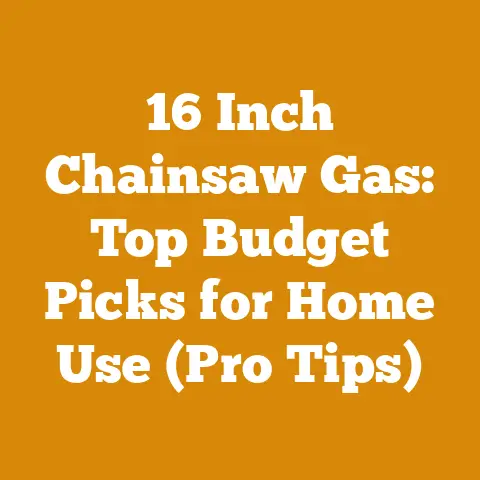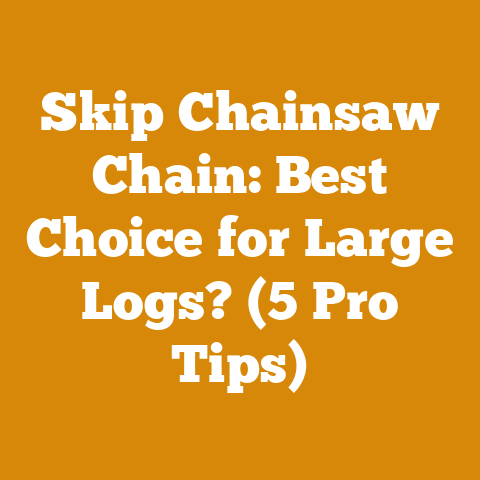Timber Frame Design Software Free: Top Picks for Builders (7 Must-Haves)
Customizability is key when embarking on a timber frame project. It’s not just about the design; it’s about tailoring the entire process to your specific needs and budget. That’s why choosing the right timber frame design software is so crucial. And the best part? There are some fantastic free options available. Let’s dive in!
Timber Frame Design Software Free: Top Picks for Builders (7 Must-Haves)
Timber framing, with its inherent beauty and structural integrity, has captivated builders for centuries. However, modern timber frame construction relies heavily on software to streamline the design process, improve accuracy, and facilitate collaboration. While premium software packages offer advanced features, several free timber frame design software options provide a solid foundation for both hobbyists and professionals. This article explores seven must-have free timber frame design software picks, focusing on their key features, limitations, and suitability for different project types. I’ll also share some personal insights and experiences, as well as delve into the often-overlooked cost factors associated with timber frame projects.
Understanding the Landscape of Free Timber Frame Design Software
Before we delve into specific software recommendations, it’s essential to understand what to expect from free timber frame design software. Generally, these programs offer a subset of the features found in paid versions, often with limitations on project complexity, file formats, or support. However, they can still be incredibly valuable for:
- Conceptual design: Sketching out initial ideas and exploring different timber frame layouts.
- Basic modeling: Creating 3D models of timber frame structures with reasonable accuracy.
- Learning the basics: Gaining familiarity with timber frame design principles and software workflows.
- Small projects: Designing and building smaller timber frame structures like sheds, pergolas, or small cabins.
7 Must-Have Free Timber Frame Design Software Picks
Here are my top picks for free timber frame design software, considering their features, ease of use, and overall value:
-
SketchUp Free: This web-based version of the popular SketchUp modeling software is a great starting point. It’s user-friendly and has a vast library of pre-built components, including timber frame elements. While you’ll need to learn the basics of SketchUp, the learning curve is relatively gentle, and there are tons of online tutorials available.
- Key Features: Intuitive interface, 3D modeling, component library, online collaboration.
- Limitations: Limited features compared to the paid version, requires an internet connection.
- Best For: Conceptual design, basic modeling, learning the ropes.
-
LibreCAD: This is a free, open-source 2D CAD program. It’s not specifically designed for timber framing, but it’s a powerful tool for creating detailed 2D drawings of timber frame layouts, joinery details, and shop drawings. It’s a great option if you prefer a traditional CAD approach.
-
Key Features: Precise 2D drawing tools, DXF file format support, customizable interface.
- Limitations: No 3D modeling capabilities, steeper learning curve than SketchUp.
- Best For: Detailed 2D drawings, shop drawings, precise joinery design.
-
FreeCAD: A parametric 3D CAD modeler that, while having a steeper learning curve, offers significant power. Its parametric capabilities let you easily change dimensions and see the effects reflected throughout your model. With specific modules and plugins, FreeCAD can be adapted for timber frame design.
-
Key Features: Parametric modeling, open-source, customizable with plugins, support for various file formats.
- Limitations: Steeper learning curve, requires some programming knowledge for advanced customization.
- Best For: Complex timber frame designs, parametric modeling, users comfortable with CAD software.
-
QCAD: Similar to LibreCAD, QCAD is a free, open-source 2D CAD program focused on ease of use. It offers a streamlined interface and a good set of drawing tools, making it suitable for creating timber frame plans and details.
- Limitations: No 3D modeling capabilities.
- Best For: 2D timber frame plans, shop drawings, users looking for an easy-to-use CAD program.
-
DraftSight (Free for a Limited Time/Older Versions): Older, free versions of DraftSight are available (though no longer actively supported), offering a more robust 2D CAD experience than LibreCAD or QCAD. It provides a familiar AutoCAD-like interface and advanced drafting tools. Finding these older versions might require some searching.
-
Key Features: AutoCAD-like interface, advanced drafting tools, DWG file format support.
- Limitations: Older versions are no longer actively supported.
- Best For: Users familiar with AutoCAD, complex 2D timber frame drawings.
-
Steel Frame Design Software (Adaptable for Timber): Some free steel frame design software can be adapted for timber frame design by modifying material properties and connection details. While not ideal, it can provide a starting point for structural analysis and design. Programs like SkyCiv Structural 3D offer a free trial, which could be helpful for a limited-time project.
-
Key Features: Structural analysis, load calculations, connection design.
- Limitations: Requires adaptation for timber frame design, may not be ideal for complex joinery.
- Best For: Structural analysis, load calculations, experienced users comfortable with structural engineering software.
-
Blender: While primarily known for animation and visual effects, Blender is a powerful open-source 3D creation suite that can be used for timber frame design. It offers advanced modeling tools, rendering capabilities, and a vibrant community of users. The learning curve is steep, but the potential is immense.
-
Key Features: Advanced 3D modeling, rendering, animation, open-source.
- Limitations: Steeper learning curve, requires significant time investment.
- Best For: Visually stunning timber frame renderings, complex 3D models, users willing to learn advanced software.
The Importance of Detailing: Beyond the Software
Software is a tool, but it’s the understanding of timber frame joinery and construction principles that truly brings a design to life. Don’t rely solely on the software to make decisions. Learn about traditional joinery techniques, wood properties, and structural considerations. This knowledge will inform your design choices and ensure a structurally sound and aesthetically pleasing timber frame. I remember one project where I relied too heavily on the software’s automatic joinery suggestions, and the result was a structurally weak connection that required significant rework. That was a hard-learned lesson!
Cost Considerations: More Than Just the Software
While the software might be free, a timber frame project involves significant costs. It’s crucial to have a realistic budget before you even start designing. Let’s break down some of the key cost factors:
Timber Costs
This is usually the biggest expense. The cost of timber varies widely depending on the species, grade, and availability in your region.
- Wood Species: Hardwoods like oak and maple are generally more expensive than softwoods like pine and fir. However, they offer superior strength and durability. Locally sourced timber is often more affordable and sustainable.
- Timber Grade: Higher grades of timber have fewer knots and imperfections, making them stronger and more aesthetically pleasing. However, they come at a premium price.
-
Timber Prices: According to recent data, the average price of framing lumber has fluctuated significantly in recent years. As of late 2023 and early 2024, prices have stabilized somewhat but remain higher than pre-pandemic levels. Expect to pay anywhere from \$3 to \$10 per board foot, depending on the species and grade.
- Personal Experience: I’ve found that building relationships with local sawmills can often lead to better prices and higher-quality timber. Don’t be afraid to negotiate!
Labor Costs
If you’re not cutting and assembling the timber frame yourself, you’ll need to factor in labor costs. This can include:
- Timber Framers: Experienced timber framers can command high hourly rates. Expect to pay anywhere from \$50 to \$150 per hour, depending on their experience and location.
- General Laborers: You may also need to hire general laborers to assist with site preparation, material handling, and other tasks.
- Project Management: If you’re managing the project yourself, factor in your own time and effort.
Tool and Equipment Costs
Timber framing requires specialized tools, including:
- Chainsaws: A powerful chainsaw is essential for cutting large timbers. Professional-grade chainsaws can cost anywhere from \$500 to \$2,000. I recommend investing in a high-quality chainsaw that will last for years.
- Mortise Machines: Mortise machines are used to cut precise mortises in timbers. These can be expensive, ranging from \$1,000 to \$5,000.
- Planers and Jointers: Planers and jointers are used to smooth and square timbers. These can also be expensive, ranging from \$500 to \$3,000.
-
Hand Tools: Don’t forget about hand tools like chisels, mallets, and measuring tools.
- Cost Optimization Tip: Consider renting some of the more expensive tools instead of buying them. This can save you a significant amount of money.
Other Costs
- Permits: Building permits are required for most timber frame projects. The cost of permits varies depending on your location and the size of the project.
- Engineering Fees: You may need to hire a structural engineer to review your timber frame design and ensure it meets building codes.
- Transportation: Transporting timbers to the building site can be expensive, especially if you’re sourcing them from a distant location.
- Finishing Materials: Don’t forget about the cost of finishing materials like stains, sealants, and hardware.
Budgeting for Firewood Preparation
Even something as seemingly simple as firewood preparation has hidden costs. Let’s consider those:
- Wood Source: Whether you’re harvesting your own timber (with potential permit costs and time investment) or purchasing cords, this is your base cost. Prices vary greatly by region and wood type. In my area, a cord of seasoned hardwood can range from \$200 to \$400.
- Equipment: Chainsaws, axes, log splitters – these are essential. A good quality chainsaw can easily set you back \$300-\$800. Log splitters, depending on whether they’re manual, gas-powered, or electric, range from \$150 to upwards of \$2,000.
- Maintenance: Chainsaw chains need sharpening, splitters need oil changes, and all tools require upkeep. Factor in an ongoing maintenance budget.
- Labor: Your time is valuable! If you’re hiring someone to help, factor in their hourly rate.
-
Storage: If you’re building a woodshed, there’s the cost of materials and construction.
- Data Point: According to a study by the Department of Energy, heating with firewood can be cost-effective compared to other fuels, but only if you factor in all associated costs and time.
Case Study: Budgeting for a Small Timber Frame Cabin
Let’s look at a hypothetical example of budgeting for a small timber frame cabin:
- Timber (Pine): 1,000 board feet @ \$4/board foot = \$4,000
- Labor (Timber Framing): 80 hours @ \$75/hour = \$6,000
- Chainsaw Rental: \$200
- Permits: \$500
- Engineering Fees: \$500
- Transportation: \$300
- Finishing Materials: \$500
Total Estimated Cost: \$12,000
This is just a rough estimate, and the actual cost could be higher or lower depending on your specific circumstances.
Optimizing Costs: Tips and Tricks
Here are some practical tips for optimizing costs in your timber frame project:
- Source Timber Locally: This can save you money on transportation costs and support local businesses.
- Use Less Expensive Species: Consider using less expensive species like pine or fir for non-structural elements.
- Do Some of the Work Yourself: If you’re handy, you can save money by doing some of the work yourself, such as site preparation, finishing, or landscaping.
- Rent Tools and Equipment: Renting tools and equipment can be more cost-effective than buying them, especially if you only need them for a short period.
- Shop Around for Prices: Get quotes from multiple suppliers and contractors to ensure you’re getting the best price.
- Plan Carefully: Careful planning can help you avoid costly mistakes and delays.
Formulas and Calculations
Understanding some basic formulas can help you estimate material needs and costs:
- Board Feet: (Thickness in inches x Width in inches x Length in feet) / 12
- Estimating Drying Time: Drying time depends on wood species, thickness, and environmental conditions (temperature, humidity, airflow). There’s no single formula, but generally, air-drying hardwoods takes about 1 year per inch of thickness. Kiln drying is much faster but adds to the cost.
Challenges Faced by Small-Scale Loggers and Firewood Suppliers
It’s crucial to recognize the challenges faced by small-scale loggers and firewood suppliers worldwide. They often operate with limited resources, face fluctuating market prices, and must navigate complex regulations. Supporting these local businesses is not only economically beneficial but also helps promote sustainable forestry practices.
Actionable Takeaways
- Choose the right software: Experiment with different free timber frame design software options to find the one that best suits your needs and skill level.
- Learn the fundamentals: Don’t rely solely on the software. Learn about timber frame joinery, wood properties, and structural considerations.
- Create a realistic budget: Factor in all costs, including timber, labor, tools, permits, and transportation.
- Optimize costs: Source timber locally, use less expensive species, and do some of the work yourself.
- Support local businesses: Purchase timber and firewood from local suppliers.
Next Steps
- Download and experiment with the free timber frame design software options discussed in this article.
- Research timber frame joinery techniques and wood properties.
- Develop a detailed budget for your timber frame project.
- Contact local sawmills and timber framers to get quotes.
- Start designing your dream timber frame structure!
Remember, timber framing is a rewarding and challenging craft. By choosing the right software, understanding the costs involved, and planning carefully, you can create a beautiful and durable timber frame structure that will last for generations. And don’t be afraid to get your hands dirty – there’s nothing quite like the satisfaction of building something with your own two hands.






